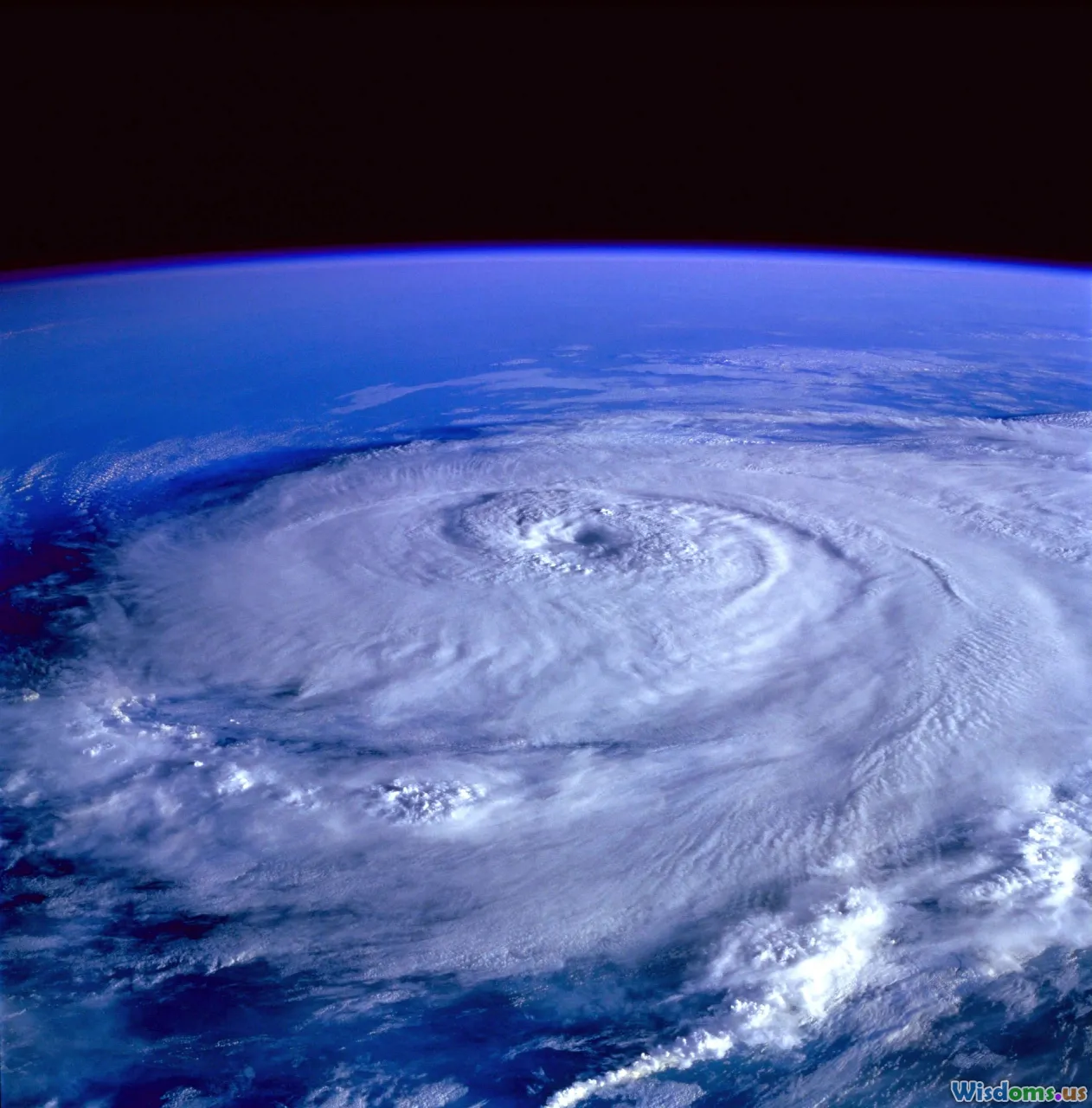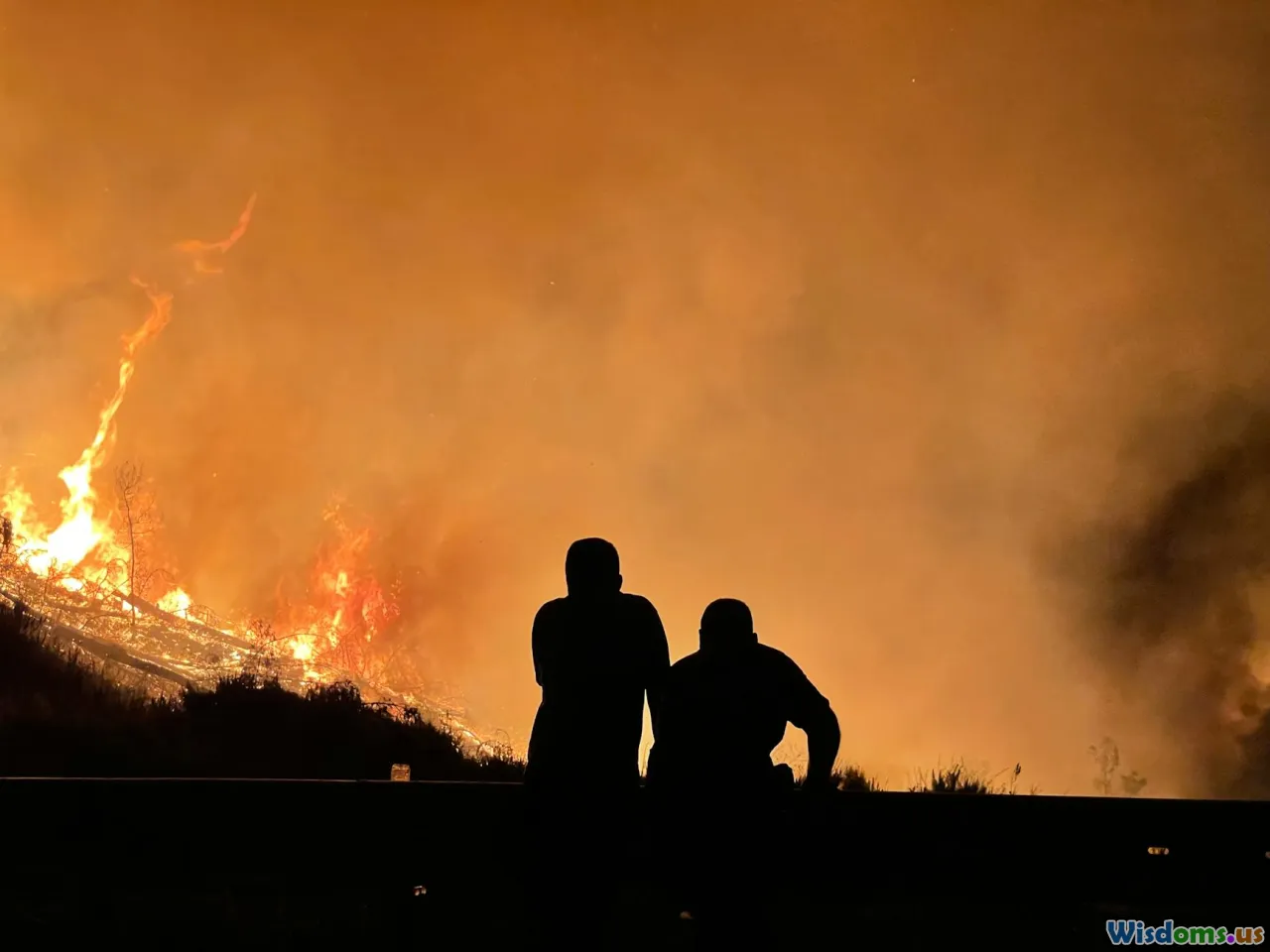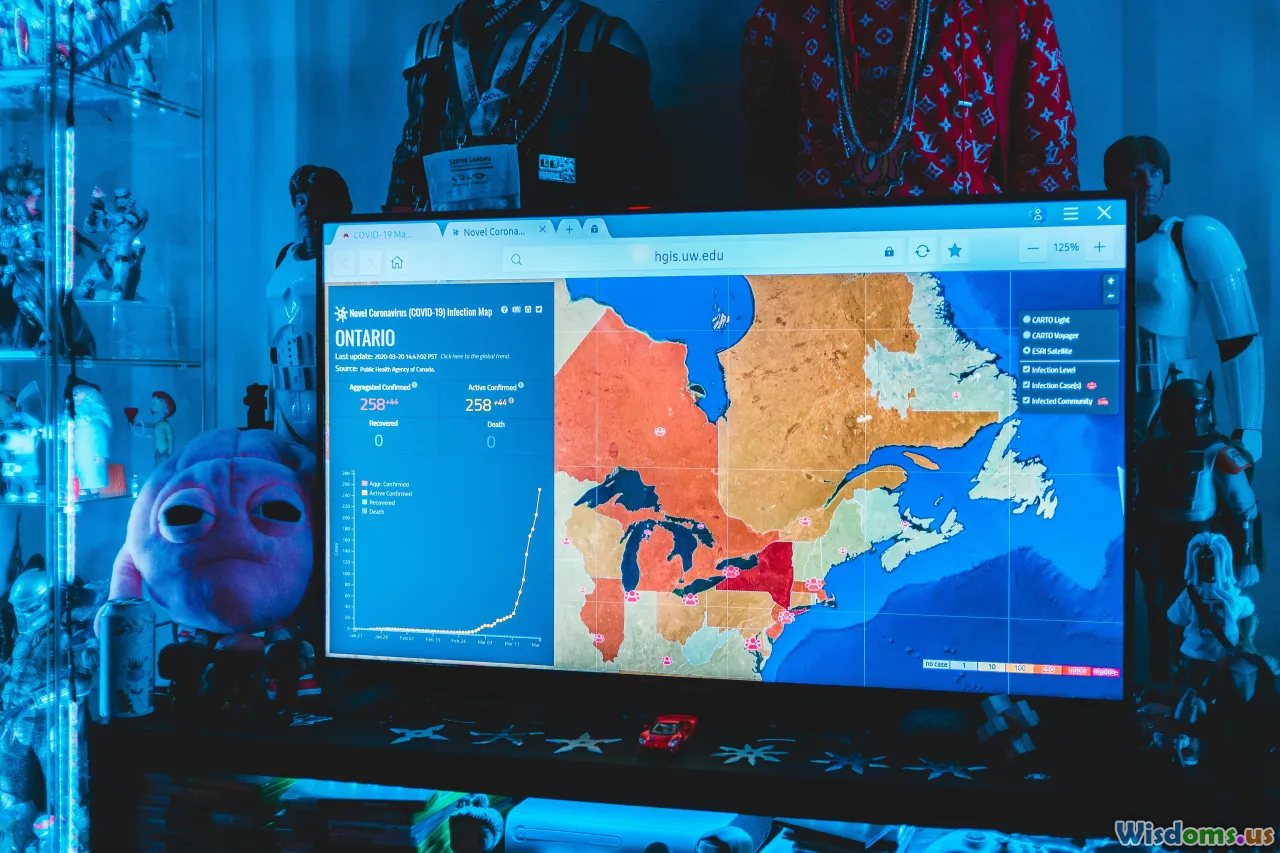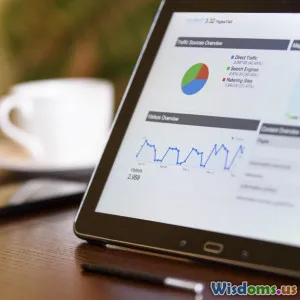
Trends in Big Data Analytics for Climate Change Solutions
14 min read Explore emerging big data analytics trends driving effective climate change solutions and environmental decision-making. (0 Reviews)
Trends in Big Data Analytics for Climate Change Solutions
As climate change continues to reshape economies, ecosystems, and societies, harnessing the power of big data analytics has become not only a cutting-edge opportunity but an urgent necessity. Today, interdisciplinary teams of scientists, policymakers, business leaders, and activists rely on torrents of data and sophisticated analytics techniques to unravel the complexities of the Earth's changing climate — and discover actionable solutions. From leveraging satellite imagery to employing predictive AI models, the landscape of big data analytics for climate solutions is rapidly transforming. Here's a deep dive into the latest trends, their applications, and guidance on navigating the data-driven frontier of climate action.
The Expanding Role of Remote Sensing Data

Satellites have revolutionized our ability to observe Earth's complex systems and detect even subtle changes over time. In recent years, improvements in resolution, frequency, and accessibility of remote sensing data have fueled new climate solutions.
Granular, Global Monitoring
Organizations like NASA, ESA, and startups such as Planet Labs deploy fleets of satellites that capture terabytes of Earth imagery daily. High-resolution sensor data underpin applications such as deforestation monitoring, glacier volume estimations, and real-time wildfire detection. For example, Global Forest Watch uses satellite feeds and AI to provide governments and NGOs with near-real-time alerts of illegal logging or land use changes across tropical forests.
Geospatial Analytics at Scale
Modern cloud-based geographic information systems (GIS) enable the fusion of earth observation imagery with weather, ecology, and socioeconomic datasets. This integration allows analysts to model everything from the impact of coastal flooding on urban assets to the spread of agricultural pests triggered by changing temperatures. Open-access platforms like Google Earth Engine democratize these analyses, empowering local organizations in developing countries to conduct sophisticated climate risk assessments without prohibitive infrastructure costs.
Integration of Diverse Data Streams for Holistic Insights

Traditionally, environmental modeling relied on narrow, domain-specific datasets. Today, big data analytics increasingly draws on multispectral and multidomain data, unlocking more robust and actionable insights.
Merging IoT with Traditional Climate Data
Internet of Things (IoT) sensors now network fleets of weather stations, urban air quality monitors, and ocean buoys, adding high-resolution, real-time information to established climate datasets. When this sensor data is aggregated with long-term satellite records or socio-economic databases, it creates a layered perspective on phenomena like urban heat islands or drought intensification.
Case Study: Urban Climate Adaptation in Singapore
The Cooling Singapore initiative integrates data from thermal cameras, in situ temperature sensors, weather radars, and social activity logs to model overheating in city neighborhoods. Advanced analytics deliver guidance on where green corridors or reflective surfaces best reduce urban heat stress, exemplifying how multi-source data can optimize adaptation strategies.
Advanced Predictive AI and Machine Learning Models

Machine learning, particularly deep learning and neural networks, is supercharging climate prediction and risk modeling by uncovering patterns that are invisible to traditional statistical techniques.
Next-generation Climate Models
Google DeepMind’s GraphCast leverages AI to achieve more accurate weather forecasts—delivering global predictions in seconds rather than hours and outperforming conventional numerical models on key metrics. These ML-powered methods process historical simulations, satellite data, and sensor feeds, opening the door to ultra-localized risk assessments, such as flash flood warnings or drought onset predictions tailored to specific geographies.
Future-Proofing Renewable Energy Infrastructure
Power utilities and solar/wind operators increasingly deploy machine learning to anticipate fluctuations in energy generation and demand driven by weather extremes. By modeling massive amounts of sensor and meteorological data, companies like IBM and Siemens help grid operators preempt outages and optimize renewable integration, reducing emissions and costs.
Real-Time Climate Risk Assessment for Disaster Response

Extreme weather and climate-fueled disasters are growing not only in frequency but also in severity. Big data analytics provide the backbone for agile, informed disaster management.
Dynamic Flood and Wildfire Monitoring
Platforms such as FloodIQ (by First Street Foundation) or NASA’s Fire Information for Resource Management System (FIRMS) synthesize satellite, hydrological, and crowd-sourced data to track the movement of floodwaters or wildfires in near real-time. This information supports evacuation planning, resource allocation, and infrastructure protections, minimizing loss of life and property.
Impact Forecasting and Event Attribution
Innovative frameworks now combine rapid machine learning analysis with insurance and property databases to provide payout estimates within hours after a disaster. Organizations including Willis Towers Watson use high-speed analytics to attribute local damages to specific climate events, streamlining disaster aid and enhancing community resilience.
Open Data Platforms and Crowdsourcing Initiatives

Collaboration and transparency are essential for accelerating climate solutions. Thus, there is a booming trend toward making climate data more open, extensible, and participatory.
Global Data Hubs and APIs
Institutions like the European Copernicus Programme, NOAA Climate Data Online, and the World Bank’s Climate Data API offer free, standardized datasets to scientists and entrepreneurs worldwide, facilitating cross-border research and rapid app development. Open government data fuels everything from citizen-led air quality mapping to global disease-spread simulations linked to climate trends.
Engaging Citizen Scientists
Platforms such as Zooniverse and iNaturalist empower the public to classify satellite images, log species observations, and contribute to monitoring efforts on massive scales. These initiatives not only generate actionable data, but also build community engagement and public accountability around environmental challenges.
Edge Computing: Bringing Analytics Closer to the Source

Processing immense volumes of climate-related data at distant servers can introduce latency, cost, and privacy challenges. Edge computing offers a solution by enabling analysis at or near the data source.
Smart Sensors in Environmental Monitoring
Smart buoys and wireless sensor networks, equipped with AI chips capable of on-device analytics, now detect oil spills, measure atmospheric pollutants, or forecast floods almost instantly. For example, coastal communities in Indonesia use solar-powered sensor networks that autonomously flag dangerous surges, providing critical minutes of advance warning during storms or tsunamis.
Reducing the Carbon Footprint of Data
Locally processing data through edge devices helps cut the energy demand (and related emissions) of sending raw information to central cloud facilities. This closed-loop architecture not only accelerates responsiveness but also aligns with sustainability goals, especially in regions where digital infrastructure and renewable electricity are still developing.
Advanced Visualization for Policy and Public Engagement

Turning intricate data into actionable knowledge requires effective communication tools. Here, big data-driven visualizations are revolutionizing advocacy, policy, and education.
Immersive Dashboards and Digital Twins
Sophisticated visualization platforms such as Climate Central’s interactive sea-level rise maps or the IPCC’s physical science dashboards turn gigabytes of projections into accessible, interactive graphics. Some cities use digital twin technology—virtual replicas integrated with real-time sensor data—to simulate the impacts of climate strategies, engaging policymakers and the public in scenario exploration.
Storytelling with Data
High-impact infographics, animations, and interactive maps empower communities to see, and even feel, the risks posed by climate change in their local context. For example, Bloomberg Green’s "Climate Data Dashboards" translate complex climate statistics into clear, actionable takeaways for governments and individuals.
Ethical AI and Data Governance in Climate Analytics

As climate analytics become more sophisticated, so do concerns around privacy, data sovereignty, bias, and ethical decision-making.
Ensuring Data Integrity and Fair Use
With data sourced globally from numerous devices, the risk of errors or algorithmic bias can threaten the reliability and equity of climate-related decisions. Robust data governance frameworks—emphasized by organizations like the Open Data Institute and Climate Transparency—ensure that models are transparent, inclusive, and open for scrutiny.
Privacy-First Models
Innovations such as federated learning allow climate models to learn from distributed sensor networks without centralizing sensitive raw data. This technique not only satisfies privacy regulations (such as GDPR) but also broadens data access, especially to remote or underserved communities.
Fostering Cross-Sector Collaboration for Scalable Solutions

No single entity can tackle the world's climate challenges alone. Big data analytics thrive in environments where research labs, startups, businesses, and governments share expertise and resources.
Data Collaboratives and Consortiums
Projects like the Climate Data Science Initiative and the Extreme Earth project unite experts from domains as diverse as meteorology, health, AI, and economics. Their work leads to reproducible, open-source climate analytics tools available to all, making high-impact research more accessible and accelerating the time from data insight to real-world implementation.
Corporate-Nonprofit Partnerships
Startups and large tech companies—like Microsoft’s AI for Earth and the Climate TRACE coalition—channel funding and cutting-edge data science tools to on-the-ground organizations in climate-vulnerable regions. This model democratizes access to technology, delivers tailored training, and supports locally led innovation, exemplifying how strategic alliances can move the needle toward a more resilient future.
From satellites in the sky to sensors at street level and everywhere in between, big data analytics are propelling a new era of climate intelligence. The convergence of diverse data streams, machine learning advancements, open platforms, and cross-sector collaboration offers a promising roadmap—not only to understand, but importantly, to act—on climate threats and opportunities. As these trends mature, integrating thoughtful governance and ever-greater public participation will be the key to unlocking truly transformative climate solutions.
Rate the Post
User Reviews
Popular Posts

















